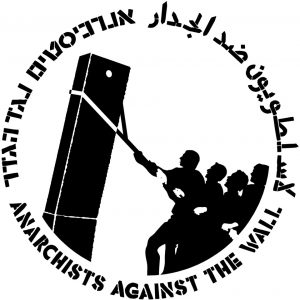This week, we are reading Chapter Six, titled, “Homeland: Anarchy and Joint Struggle in Palestine/Israel” by Uri Gordon. This is the final chapter in Anarchy Alive! (2008) and it offers insights on the issues, challenges, and movements involved in solidarity and direct action struggles within occupied and contested State forms. Gordon demonstrates there is much more going on in the Israeli/Palestinian conflict than what is shown in the news.
The chapter begins with a historical account of the Israeli State project and an introduction to the occupation of Palestine as well as the anarchist presence in the region at this time. The chapter discusses solidarity in terms of allies as supporters/followers, the consequences of resistance, including State repression, blacklisting, violence, and even death, which these activists routinely face, and the resulting contractions that can arise when working for change across varying degrees of social and cultural differences.
Gordon introduces examples of solidarity and resistance as practiced by two groups, the International Solidarity Movement (ISM) and Anarchists Against the Wall, the direct action group formed in opposition to the ‘Segregation Barrier,’ a.k.a. the ‘Apartheid Wall.’ ISM is known for the cooperation they have achieved between Jews and Palestinians, as well as Internationals, who, among other things, act as human shields in zones of increasing militarised violence within the region. Complimenting this history, the Anarchists Against the Wall movement consciously integrates diverse struggles, creating networks of resistance intersecting across different forms of oppression, as exemplified by the relationships between the anarchists and queer and animal liberation movements. In the end, Uri Gordon offers a path of shared development in struggle that argues for the nuanced articulation of place-based identity in terms of Indigeneity and bioregionalism.
 This week, we are reading Chapter Six, titled, “Homeland: Anarchy and Joint Struggle in Palestine/Israel” by Uri Gordon.
This week, we are reading Chapter Six, titled, “Homeland: Anarchy and Joint Struggle in Palestine/Israel” by Uri Gordon.